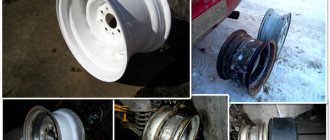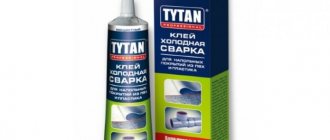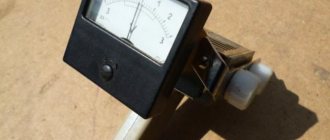It's no secret that modern batteries run on electrolyte. This substance allows batteries to accumulate charge and release it in the form of final electricity during operation. One of the most common electrolytes is alkaline, which is actively used in batteries of the same name. This substance works well in battery operation, but also has some disadvantages. We will talk in more detail about them, the essence of the alkaline electrolyte and the principles of its operation in today’s article.
Properties and chemical composition
The following alkaline electrolytes are most often used in batteries:
- Potassium lithium.
- Sodium.
- Nickel-cadmium.
- Nickel metal hydride.
Sodium electrolytes have a long service life, but are completely unsuitable for use at subzero air temperatures.
In this regard, potassium-lithium compounds are significantly superior to sodium-lithium compounds in terms of frost resistance, but are not suitable for work in tropical conditions due to the limitation of the maximum operating temperature at 35˚C.
Nickel-cadmium batteries are used in modern electronics, but the presence of the memory effect imposes certain restrictions on the use of such products.
Nickel-metal hydride batteries do not have this disadvantage, but their cost is quite high, which is a serious obstacle to the widespread use of cells of this type as portable sources of electricity.
Life time
Potassium-lithium alkaline electrolyte, with proper operation and high-quality preparation, is one of the longest serving in its field. It has been experimentally proven that this liquid can withstand more than 1000 charge-discharge cycles, which is simply a huge number of such procedures. However, when using alkaline electrolytes, it is worth keeping in mind the factors that reduce their service life. The most important of these are the following:
- Frequent insufficient battery charging;
- Systematic deep discharge of the battery;
- Insufficient amount of electrolyte in the separator;
- Long-term use of electrolyte at high ambient temperatures;
- Fluid operating temperatures are too high and frequent.
By avoiding the presence of these factors specifically in your situation, you can extend the service life of the battery and alkaline electrolyte separately significantly. Note that when using such liquids, it is also important to constantly refill the battery with the same type of electrolytes. Otherwise, the battery life will be reduced.
Areas of use
They can be used to refill batteries of various capacities and voltages. Such products are widely used in the following areas:
- Alarm systems.
- As starter batteries for military equipment.
- Backup power supplies for passenger cars, trolleybuses and trams.
- As traction devices for powerful electrical installations.
Compact batteries with alkaline electrolyte can also be used in power tools, various gadgets and children's toys.
In addition to its use in batteries, alkaline electrolyte can be used for copper plating of steel. This method is one of the most effective for coating other metals with copper.
Similar alkaline mixtures can be made for galvanizing. Most often, products with complex geometric shapes are coated with zinc in this way.
Electrolyte composition
An electrolyte is a solution of the active substance in distilled water. Depending on the type of battery used, the active substance is:
- sulfuric acid for lead-acid batteries;
- alkalis (caustic sodium or potassium) for alkaline batteries.
In alkaline batteries, to meet special requirements, the electrolyte may contain the addition of caustic lithium. Also, caustic lithium is the main one in lithium-ion and lithium-polymer batteries.
How to recharge batteries
If it is not possible to restore the battery's performance by charging, then the alkaline electrolyte may need to be replaced. The lifespan of the battery will depend on the correct performance of this work. It is recommended to replace the fluid in the following sequence:
- Disconnect the battery from the electrical consumers.
- Wear safety glasses and gloves. It would be a good idea to protect your clothes from caustic substances with a rubberized apron.
- Remove the stoppers and pour out the old liquid from the jars.
- Prepare a new electrolyte.
- Fill to the level recommended by the battery manufacturer.
- Replace the plugs.
- Connect the battery to the charger.
If the reason for the battery failure was poor-quality electrolyte, then after replacing the chemical composition and fully charging, the battery can be used in standard mode.
Rules for charging an alkaline battery
Since the functioning of an alkaline electrolyte largely depends on how exactly the battery into which it is filled will be charged, it would not be amiss to consider the basic rules for charging the corresponding batteries. In general, their list is as follows:
- Charge the battery exclusively at medium and high current levels, since this practice has a positive effect on both the condition of the alkaline electrolyte and the condition of the battery;
- During the charging process, be sure to ensure that the electrolyte containing lithium does not exceed a temperature of more than 45 degrees Celsius and 35 for electrolytes without lithium;
- It is necessary to insulate alkaline batteries during charging only if the ambient temperature is less than minus 30 degrees Celsius. In other cases, the batteries are charged as usual;
- When charging the battery, make sure that the electrolyte does not splash out, as this is not permissible;
- After 10 charge-discharge cycles, always check the electrolyte level and, if necessary, top it up.
A clear sign that the alkali battery was charging correctly will be the presence of 1.4-1.45 Volts of voltage at the beginning of charging the battery and 1.75-1.85 Volts at the end.
Precautionary measures
As mentioned above, the use of gloves and glasses is a prerequisite when working with alkaline solutions. Ignoring this rule can lead to very serious consequences. For example, you can get serious burns to the mucous membrane of the eyes or damage the skin of the upper extremities.
If, as a result of the work, it was not possible to avoid contact with the caustic substance on the skin, then the affected areas should be immediately washed with plenty of water with the addition of vinegar or citric acid. If electrolyte gets into the eyes, it is also necessary to rinse the affected organ of vision and immediately seek medical help.
When working with electrolyte and charging the battery, it is not recommended to smoke or light an open fire indoors. Failure to comply with this requirement may result in an explosion of flammable gas, which may be formed during chemical reactions.
Return and recycling of alkaline batteries
In recent years, collection points for lead-acid car batteries have appeared everywhere. This has become very profitable, since battery manufacturers pay good money for them and take the batteries for recycling. At most of these collection points you can also donate alkaline batteries. But not everywhere yet. The fact is that the population has fewer such batteries and collection points have to accumulate them for a long time in order to hand them over to the enterprise.
Remember that you can’t just throw alkaline batteries in the trash. They contain hazardous substances. These are caustic potassium and sodium, alkali metal compounds and other substances that must be properly neutralized. Just storing them at home or in the garage is also unsafe.
Therefore, it is imperative to hand them over to collection points, from where they will be taken away for disposal in accordance with all the rules. And most importantly. You get rid of your old non-working alkaline battery and get paid for it.
How to prepare an alkaline electrolyte
It can be purchased in specialized stores, but if this is not possible, then you can prepare the liquid mixture for pouring into the battery with your own hands. For
To perform this work, you should prepare solid alkali, distilled water and non-metallic utensils. A sodium or potassium-lithium electrolyte is prepared in the following sequence:
- Pour the required amount of water into the bowl.
- Carefully pour a pre-prepared portion of alkali into the water.
- Using a glass or plastic spatula, stir the mixture slowly.
- Measure the density of the electrolyte. If this parameter is too low, then add dry matter; if it is too high, then add water (optimal value 1.2 g/mm3).
- Cover the dish with a lid and let the solution sit for 3 hours.
- Carefully pour out the diluted lye so that the sediment remains at the bottom of the container.
The prepared solution should be stored in glass containers with tightly sealed necks. It is recommended to use rubber plugs or any material that does not react to alkali as lids.
When preparing electrolyte, you should also be careful and use safety glasses and gloves.
Still have questions or have something to add? Then write to us about it in the comments, this will make the material more complete and accurate.
Safety requirements for self-cooking
If you decide to make electrolyte to refill your lead-acid battery at home, then it is extremely important to follow safety precautions.
According to these rules, the composition is prepared under the following conditions:
- Means of protection. They are needed to protect the eyes, skin and respiratory organs. It is important to use protective equipment that is resistant to aggressive substances. That’s why they put glasses on their eyes and rubber gloves on their hands. It is advisable to wear rubber boots for your feet and a protective apron for your body.
- Neutralizer. If the acid accidentally spills, it should be covered with a neutralizing compound. As you know, acid is neutralized by alkali. Therefore, you should keep an aqueous solution based on soda ash or ammonia at the ready. Baking soda is usually found in every home.
- Mixing container. Mix ingredients together only in glass or plastic containers. The material must be resistant to aggressive substances. If it is an alkaline solution, then take steel or plastic containers. No other material is suitable for such purposes.
- Ventilated room. It is optimal to do this outdoors under a canopy. Or choose a room with good ventilation. Emitting acidic and alkaline vapors can harm health by entering the body through the respiratory tract.
- Gradual addition. When preparing the mixture with your own hands, the acid is gradually poured into water in small portions. The liquid must be stirred regularly, and try not to stop.
Compliance with such requirements and rules will protect you from mistakes, maintain your health, and also allow you to successfully refill the battery.
Physical properties of sulfuric acid electrolyte
There is another physical factor that must be taken into account, especially when large volumes of a solution of sulfuric acid and distilled water are prepared. This is the fact that when mixing equal volumes of sulfuric acid and water, after cooling such a solution, its volume will be less than the sum of the initial volumes. To take this factor into account, you need to refer to the fourth table, which shows the volume reduction values for sulfuric acid solutions of different densities.
Table 4 Reduction of solution volume
Viscosity
Viscosity is a property of the electrolyte that most significantly affects the performance of a lead-acid battery. The electrochemical processes that occur during battery operation are of a diffusion nature. The rate of diffusion mainly depends on the viscosity of the electrolyte. It is the diffusion rate that determines the flow of electrolyte to the surface and into the pores of the electrodes during discharge, especially when setting hard (minute, hour) discharge modes.
The higher the viscosity, the slower the diffusion. When the temperature decreases by 25C, the viscosity of the electrolyte increases by 2 times, and at a temperature of -50C it increases by almost 30 times compared to the viscosity at normal temperature. As viscosity increases, capacity decreases. This is why the performance of lead-acid batteries deteriorates at low temperatures. This circumstance must be taken into account when installing sealed batteries with gel (thickened) electrolyte.
Electrolyte resistivity
The resistance of an electrolyte occupying a volume limited by a length of 1 cm and a cross-section of 1 cm3 is calculated by the formula:
=rS/L
where r is the resistivity Ohm cm;
L- length, cm.
S - cross section cm2.
Resistance changes with changes in electrolyte concentration and temperature.
In order to have a minimum internal resistance of the battery, it is advisable to use an electrolyte with the lowest resistivity.
The resistivity values are given in Table 5.
Table 5. Electrolyte resistivities
The specific resistance of the electrolyte increases with decreasing temperature, most significantly at a temperature of 0C.
The freezing point of the electrolyte is important because as the battery discharges, its density and, accordingly, its freezing point decreases. When freezing, the volume of electrolyte increases, which leads to the destruction of the vessel and battery electrodes. The electrolyte with a density of 1.29 g/cm3 has the lowest freezing point. Starter batteries used in harsh conditions have an electrolyte with a density of 1.26-1.30 g/cm3, which does not measure at the lowest possible temperatures.
To determine the freezing temperatures of electrolytes of different densities, use Table 6.











